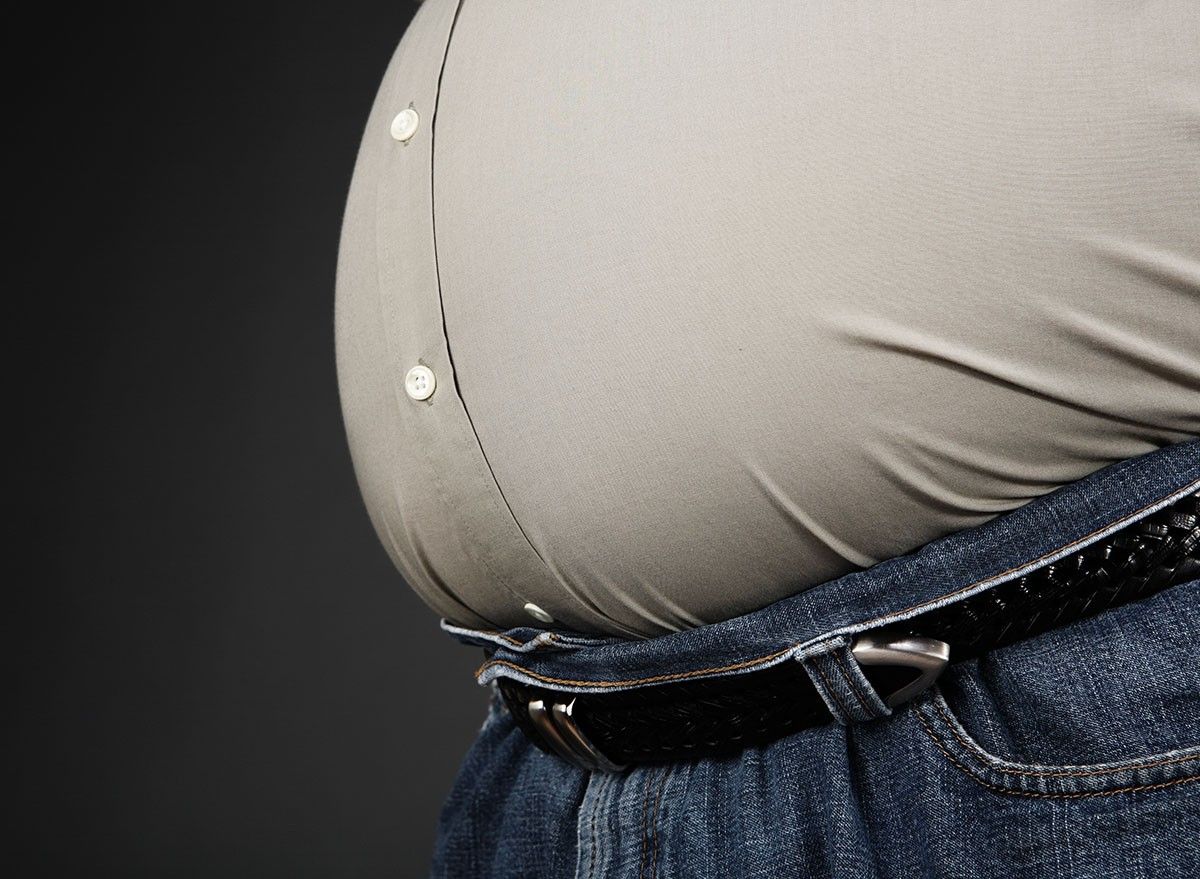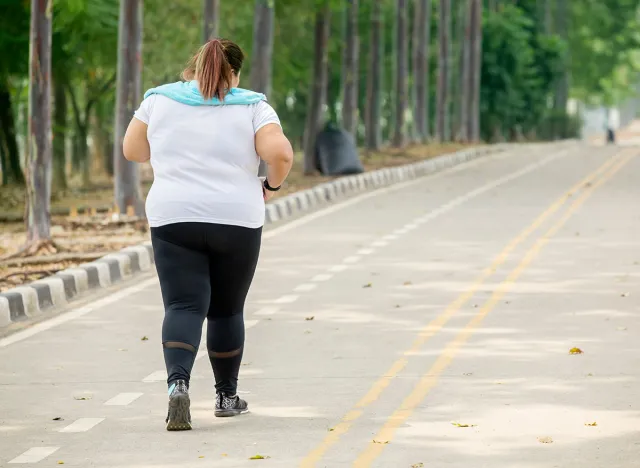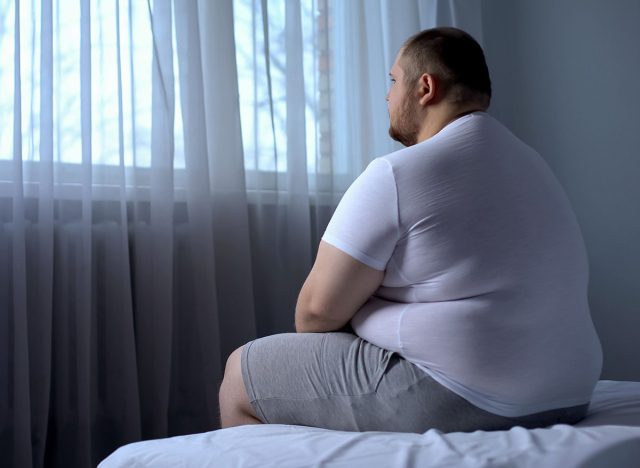3 Types of Belly Fat: Which One Are You Battling?

Have you ever wondered why some people seem to carry weight differently? Or why might your own belly fat be stubborn despite your best efforts? Dr. Eric Berg, DC, an expert in healthy weight loss, sheds light on this common concern. At 59, Dr. Berg has dedicated his career to unraveling the complexities of health and weight management. As the director of Dr. Berg's Nutritionals and a best-selling author, he's helped thousands understand the nuances of healthy ketosis and intermittent fasting. In his recent post, Dr. Berg breaks down the three main types of belly fat, offering insights that could transform your approach to health.
Understanding the Dangers of Belly Fat
Before diving into the specific belly types, it's crucial to understand why belly fat is a concern. As the Mayo Clinic experts explain, "That extra belly fat does more than just make it hard to zip up a favorite pair of jeans, though. Research shows that belly fat carries serious health risks."
The Sagging Belly: A Tale of Insulin and Stress

The first type Dr. Berg identifies is the sagging belly, which he attributes to visceral fat. "This is called visceral fat. Visceral fat is spill off from the liver," Dr. Berg explains in his post. This type of fat is particularly concerning because it surrounds organs and can impair their function.
The Role of Hormones in Belly Fat

Dr. Berg points out two main culprits behind this belly type: insulin and cortisol. "Too many carbs will increase insulin and put the fat right in your gut," he states. However, he also notes that stress plays a significant role. "Cortisol is a stress hormone. What cortisol does is it indirectly increases insulin," Dr. Berg clarifies.
The Hidden Dangers of Stress and Sugar

Dr. Berg emphasizes the interconnected nature of stress and sugar in contributing to belly fat. He warns, "When you go through stress, it will increase your blood glucose from other things, not carbs. So stress and sugar create the same effect, belly fat, and many other problems."
The Invisible Threat: TOFI

Interestingly, Dr. Berg mentions that even thin people can have this type of fat, coining the term "TOFI" or "thin on the outside, fat on the inside."
The Protruding Belly: When Your Liver Needs Help

The second type is the protruding belly, which Dr. Berg describes as "a liver problem, usually cirrhosis, advanced liver disease." This belly type is characterized by a fluid-filled sac in the abdomen, often seen in individuals with severe liver damage.
RELATED: I Shrunk From Size 22 to 8 With These 15 Tips That Actually Work
The Severity of Liver-Related Belly Fat
Dr. Berg doesn't sugarcoat the seriousness of this condition. "When you start generating fluid in your abdomen, your liver is pretty messed up, and the chances of you reversing it are pretty slim," he warns. He further illustrates the severity by stating, "You have the liver that is so dysfunctional that is leaking fluid into a sac or on your abdomen, and you have to go to the hospital every 14 days to get it drained out. Not a good situation."
Hope for Liver Health

Despite the grim outlook, Dr. Berg offers some hope, suggesting vitamin E in the form of tocotrienols and focusing on liver-friendly foods like cruciferous vegetables. He emphasizes the importance of radical lifestyle changes for those facing this condition.
The Lower Pooch: Battling Estrogen Dominance

The third type Dr. Berg discusses is the lower pooch, often seen in women but also present in men. "It's more of a superficial fat. It's called subcutaneous fat," he explains. This type of fat is often linked to estrogen dominance.
The Impact of Menopause on Belly Fat

The Mayo Clinic adds insight into why women may be particularly susceptible to this type of fat: "Many women notice an increase in belly fat as they get older — even if they aren't gaining weight. This is likely due to a decreasing level of estrogen, which appears to influence where fat is distributed in the body."
Combating Estrogen Dominance
To combat this, Dr. Berg recommends reducing estrogen exposure by avoiding soy products, pesticides, and plastics. He also suggests natural ways to inhibit the conversion of testosterone to estrogen: "Cruciferous vegetables… and then there's a concentrated cruciferous product called DIM. That would be a very good thing to take as well."
RELATED: I Lost 250 Pounds With 5 Simple Walking Tricks
The Surprising Link Between Plastics and Estrogen
In a startling revelation, Dr. Berg points out the pervasive nature of plastic in our lives and its potential impact on hormones. He states, "The average person in the US consumes the amount of plastic that equals the size of a credit card."
Tailoring Your Approach: Diet vs. Exercise

Dr. Berg underlines the importance of diet over exercise in addressing belly fat. For the sagging belly, he states, "You're not going to see much results with exercise. Why? Because exercise does not decrease insulin in a significant way."
The Mayo Clinic's Perspective on Exercise

While Dr. Berg recommends diet, the Mayo Clinic underscores the importance of exercise: "For most healthy adults, the Department of Health and Human Services recommends moderate aerobic activity, such as brisk walking, for at least 150 minutes a week or vigorous aerobic activity, such as jogging, for at least 75 minutes a week. Strength training exercises are recommended at least twice a week."
The Long Game: Patience and Persistence

Dr. Berg reminds us that tackling belly fat, especially the stubborn lower pooch, is not an overnight process. He acknowledges, "It does take a long time to get rid of that last bit of belly fat, but if you increase the amount of fasting that you do and you follow these next recommendations, I think you can speed it up."
RELATED: I Went Sugar, Gluten, and Dairy Free for 60 Days and Here Is What Happened
A Balanced Approach to Belly Fat Reduction
The Mayo Clinic offers a balanced perspective on reducing belly fat: "To lose excess fat and keep it from coming back, aim for slow and steady weight loss. Consult your doctor for help getting started and staying on track."
Understanding your belly type can be the first step toward effective weight management. By identifying the underlying causes and tailoring your approach accordingly, you can work towards a healthier, leaner you. Whether it's managing stress, supporting liver health, or balancing hormones, a holistic approach combining diet, exercise, and lifestyle changes is key to addressing your specific belly type. And if you enjoyed this article, take advantage of these 15 Quick Ways to Lose Body Fat Percentage in a Week.




